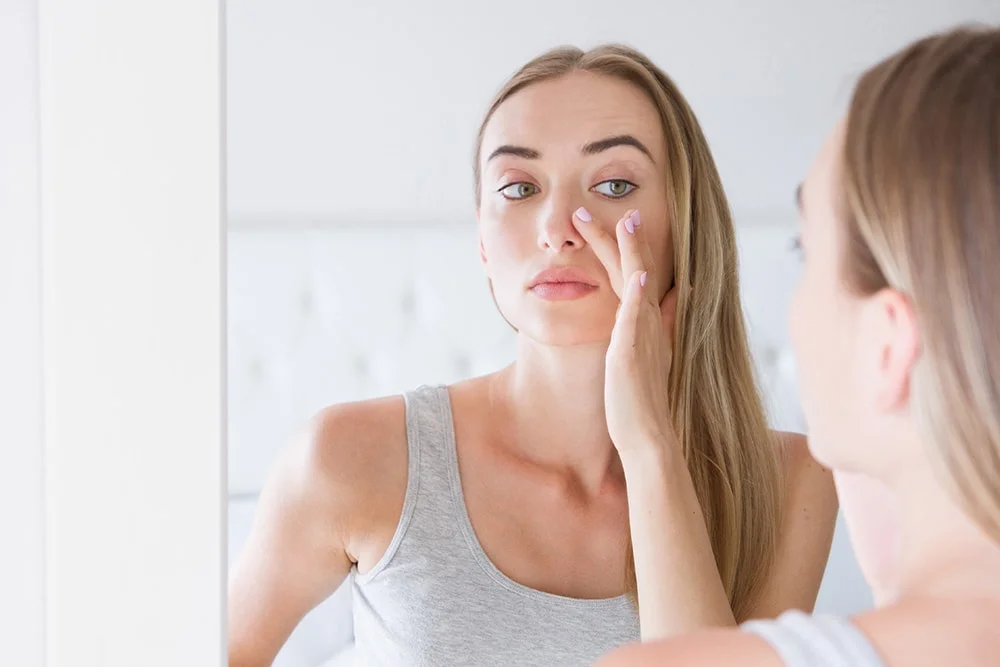Rhinoplasty, or a nose job, is a facial plastic surgery procedure designed to enhance the cosmetic or aesthetic appearance of the nose, as well as restore or reconstruct the functional integrity of the nasal airway. Sometimes patients can have a nasal deformity from birth or dating back to their childhood, while other times, patients have a known history of trauma that led to nasal obstruction or crookedness that needs correction. Whatever the reason for having a misshapen nose or impeded airflow, our Oklahoma City facial plastic surgeon, Dr. Scott Shadfar, is skilled in both the cosmetic and functional (breathing) aspects of this complex cosmetic surgery. Dr. Shadfar’s belief is that the nose should appear as though you were born with the final result following rhinoplasty, which sparked him to develop his Bespoke Rhinoplasty technique here at the Aesthetic Institute of Oklahoma.
Rhinoplasty benefits
Rhinoplasty is considered among the top aesthetic procedures performed for both men and women. The benefits achieved with rhinoplasty vary for each patient, but nose surgery can generally provide:
- A more proportional nose shape in relation to the rest of the face
- Improved breathing
- Correction of a nasal deformity or birth defect
- Long-term enhancement
- Enhancement that looks and feels natural
- Greater aesthetic harmony in the face
While rhinoplasty does have certain limitations, the procedure is versatile, effective, and offers long-lasting enhancement for good surgical candidates. Key to maximizing the benefits of any nose surgery is selecting a board-certified facial plastic surgeon to achieve your goals, as individuals who are accredited by the American Board of Facial Plastic and Reconstructive Surgery have more training and experience performing procedures of the face and neck.
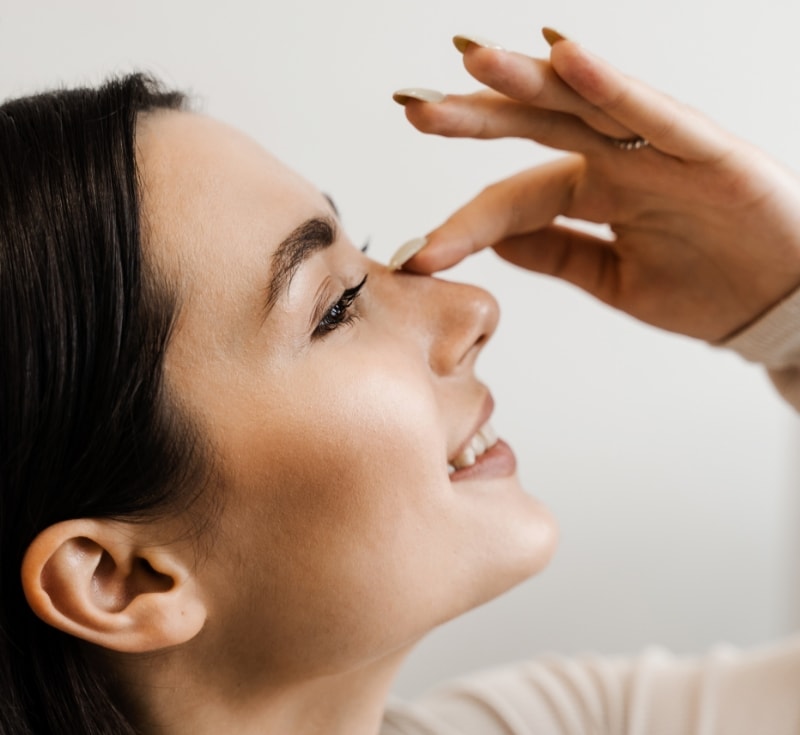
Key rhinoplasty terms to know
Throughout the process of researching the rhinoplasty procedure, you may come across certain terms that you’re less familiar with than others. Dr. Shadfar understands the importance of gaining a comprehensive overview of rhinoplasty before making a decision about surgery, so we encourage you to review the terms you may be not know at first glance:
- Scarless rhinoplasty: Also called endonasal or closed rhinoplasty, the scarless technique places incisions inside the nose. This avoids noticeable external scarring.
- Deviated septum: A condition in which the strip of cartilage between the nostrils is crooked or misaligned, potentially blocking the airways.
- Liquid rhinoplasty: A non-surgical treatment utilizing dermal fillers to temporarily straighten or balance the nose shape, resulting in short-term enhancement.
- Splint: A surgical instrument worn after surgery to immobilize and protect the nose, allowing it to heal properly.
Patient education is essential to understanding your procedure and can help you achieve greater satisfaction after surgery. Don’t hesitate to call our Oklahoma City office if you have additional questions about rhinoplasty.
Rhinoplasty candidates
Good candidates for rhinoplasty generally include women and men who are bothered by one or more of the following concerns:
- A noticeable hump or bump on the nasal bridge
- A crooked and/or distorted nasal bridge
- A bulbous, large, or downward-turned nasal tip
- Asymmetries to the nasal tip
- A deviated septum restricting proper airflow
- A history of nasal trauma
In addition to these issues, good candidates for rhinoplasty need to have realistic expectations for the outcome of surgery. This is not to say patients will not achieve the results they desire, but more that the goal of rhinoplasty is to improve the appearance and function of an individual’s nose — not to create a nose that looks identical to someone else.
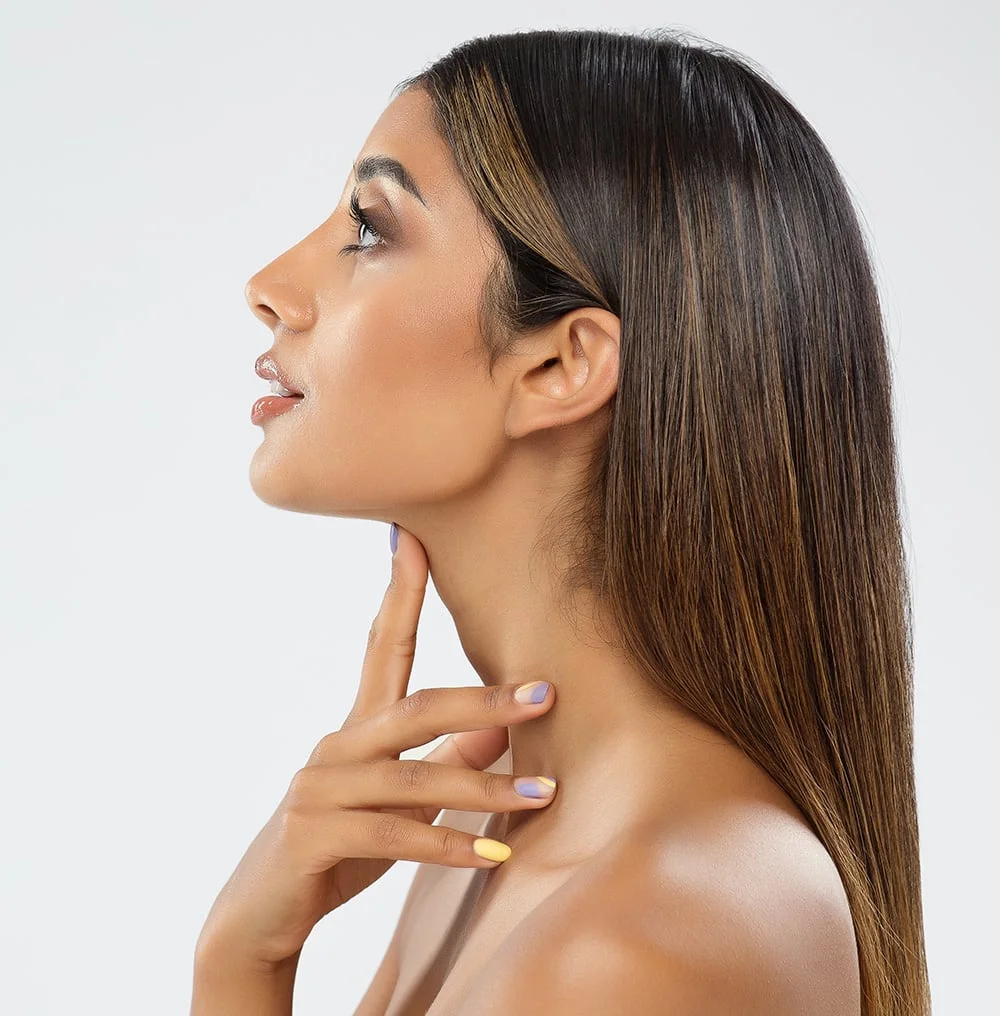
The technique
Rhinoplasty, whether using a scarless (endonasal, closed) or external (open) technique, is performed under sedation or general anesthesia, which requires an operating room. This is an outpatient surgery and patients go home the same day after awakening from the surgery. The scarless or endonasal technique can be performed with all incisions placed within the nose. If an external approach is required to get the most satisfactory outcome for an individual, then a small incision is hidden on the undersurface of the nose. Each patient will be examined individually to determine which approach is most appropriate.
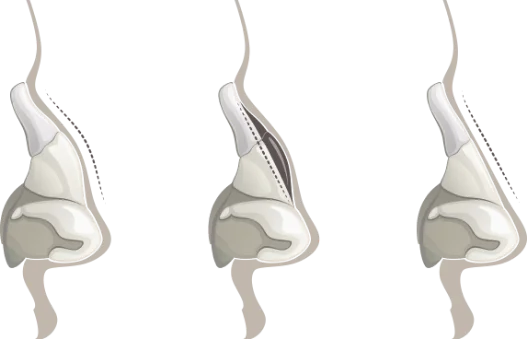
“Having this surgery was one of the best decisions I ever made. My breathing has greatly improved and the appearance of my nose exceeded my expectations. Dr. Shadfar is a wonderful surgeon and took great care of me. I would highly recommend him!”
Rhinoplasty recovery
The following morning after surgery, Dr. Shadfar will instruct patients how to care for the nose post-operatively. Patients will be expected to clean the inside of the nose where the incisions are located. If an external approach is used, sutures on the outside of the nose are removed on day 7 following the surgery, otherwise all sutures on the inside will dissolve on their own (this step is not necessary for the scarless rhinoplasty procedure). During the first week following nasal surgery, a patient can expect some swelling and congestion. Patients will have a splint and tape on the outside of their nose for one week. Sometimes bruising can be seen around the top of the nose and below the eyes. If this occurs, it is usually resolved by the end of the week at the time of the splint and tape removal.
Patients usually have minimal downtime of 1-2 weeks before returning to work, and we ask those patients traveling from out of town to stay for routine checks during this time period.
Recovery Tips After Rhinoplasty
Dr. Shadfar will provide detailed post-operative instructions to encourage optimal healing and an expedited recovery process. Healing after nose surgery takes patience, but the following tips can often maximize the quality of your results and accelerate the return to your daily routine as soon as possible:
- Keep the head elevated at 30 degrees by sleeping with pillows propped up for support.
- Use cool compresses and over-the-counter/prescribed pain medications to alleviate discomfort.
- Stick to a healthy diet of nutrients that can aid the healing process, such as foods rich in vitamins, antioxidants, and protein.
- Do not blow your nose until Dr. Shadfar advises otherwise. The nose can be cleaned by gently using a cotton-tipped swab and nasal saline solution.
Please contact Dr. Shadfar if you have any questions or concerns during the recovery period. Occasional follow-up appointments will help our team monitor the rate of your progress.
Rhinoplasty Results
The results of rhinoplasty usually improve as swelling and bruising dissipate, a process that can take a few weeks or months depending on your unique rate of healing. Although the outcome unfolds gradually, improvements to your nose should be noticeable as swelling resolves. It can take anywhere from one to two years for the final results of rhinoplasty to be revealed.
Rhinoplasty is designed to produce lifetime enhancement and balance of the facial features. The framework of the nose is permanently altered, therefore the outcome should be relatively stable for the long-term. As with other cosmetic procedures, sun protection and a healthy lifestyle can help extend the results, but it’s important to understand that suffering a nasal or facial injury may potentially necessitate retreatment. Dr. Shadfar recommends being cautious when playing contact sports or engaging in other activities that may lead to a nose injury.
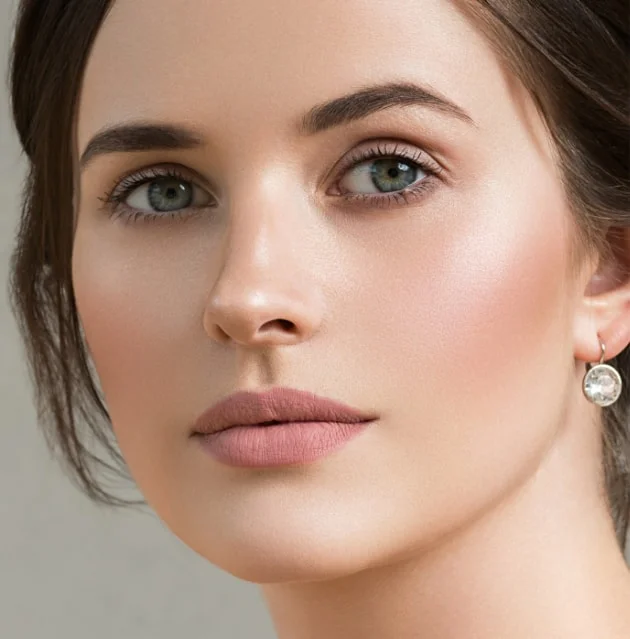
Will I Have Scars From Rhinoplasty?
Scars are inevitable with any surgery, but rhinoplasty incisions are usually so tiny and discreet that any post-surgical scarring remains faint to outside observers. Depending on the type of rhinoplasty technique utilized during your procedure, incisions may be placed internally — in which case, there will not be external scars whatsoever. This approach is known as Dr. Shadfar’s scarless rhinoplasty technique. Other patients have their procedure performed through a small incision made in the base of the columella, allowing it to be camouflaged within the natural crease on the undersurface of the nose.
Dr. Shadfar will provide aftercare instructions regarding incision care and wound healing. These guidelines allow incisions to heal as optimally as possible, making it likely that any scars will lighten and fade over time until they’re imperceptible.
Ethnic and Asian rhinoplasty
Dr. Shadfar performs nose surgery on a diverse range of individuals and achieves beautiful rhinoplasty results by using intricate techniques to enhance and complement a patient’s natural facial features. As such, attaining an optimal outcome often involves unique consideration of the various characteristics that make up a patient’s natural beauty. Men and women of Asian, Caucasian, African-American, Latino, and Middle-Eastern descent typically have distinctive facial features that differentiate one ethnicity from the other, creating the need to preserve the character of a patient’s facial appearance within the context of their aesthetic goals. In using rhinoplasty to create a more harmonious balance between facial features, Dr. Shadfar customizes each treatment plan to attain natural-looking results for all patients, and will work with you to achieve your ideal cosmetic outcome. You will have the opportunity to look at before-and-after photos, if desired, to get an idea of the potential results with rhinoplasty.

Non-surgical rhinoplasty
For patients who desire a non-surgical method of resculpting their nasal features, liquid rhinoplasty can be a minimally invasive technique to enhance the appearance of the nose without extensive downtime. This treatment utilizes dermal fillers to alter the size or shape of certain aspects of the nose, straighten or disguise a nasal hump, and fill in depressions causing an asymmetrical appearance. While this technique cannot achieve results that are as extensive and long-lasting as surgical rhinoplasty, liquid rhinoplasty offers a more conservative treatment to cosmetically refine the proportions of the nose. If you are interested in non-surgical nose contouring, Dr. Shadfar can examine your features in a consultation and help you determine whether you can benefit from liquid rhinoplasty.
Rhinoplasty adjunctive procedures
In some cases, complementing the results of your rhinoplasty with facial implants can be an effective way to achieve optimal facial balance. Facial implants are typically utilized to restore youthful contours in the chin and even the cheeks. As these features begin to flatten with age, subtle facial augmentation can create a beautiful profile in areas of the face that lack definition. Chin implants in particular have the ability to not only lengthen a recessed or diminutive chin, but also enhance the appearance of the nose by reducing its prominence. For this reason, some patients may choose to undergo chin augmentation with implants to their treatment plan to attain more proportion between their facial features and complement their rhinoplasty results.
Risks of rhinoplasty
Rhinoplasty is recognized as one of the most complex cosmetic procedures. You can maximize the safety of your surgery by selecting a qualified board certified facial plastic surgeon who regularly performs nose procedures. Extensive experience performing rhinoplasty can increase the likelihood of achieving your desired outcome while minimizing the need for a secondary procedure. Dr. Shadfar will review all the risks, benefits, and alternatives during your consultation.

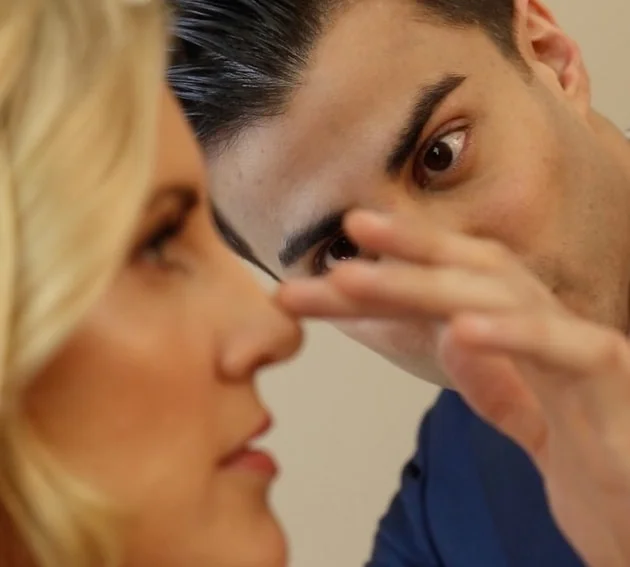
Choosing a rhinoplasty surgeon
As the central feature of the face, operating on the nose requires a high level of skill, aesthetic training, and specialized experience to achieve a harmonious result. Given the intricate nature of reconstructing the nasal framework, rhinoplasty should be performed by a facial plastic surgeon who is certified by the American Board of Facial Plastic and Reconstructive Surgery (ABFPRS). Surgeons trained and accredited in this sub-specialty generally have the highest levels of training in aesthetic and reconstructive facial procedures, distinguishing their experience from those whose focus lies in general body plastic surgery. With a facial plastic surgeon, you can entrust that you are receiving specialized care from a surgeon who exclusively works with structures of the face, head, and neck.
Dr. Shadfar is not only board certified by the ABFPRS, but he was also fellowship-trained by leading figures in facial plastic and reconstructive surgery. His ongoing commitment to advancements in the field is reflected by his membership in the American Academy of Facial Plastic and Reconstructive Surgery, as well as by his research and publication in various national medical journals. With his comprehensive experience, Dr. Shadfar can provide you with the safety, care, and results you deserve from your rhinoplasty.
RHINOPLASTY FREQUENTLY ASKED QUESTIONS (FAQS)
Which parts of the nose can rhinoplasty address?
Depending on each patient’s specific needs and desires, the rhinoplasty procedure can be individually tailored to refine and/or enhance the nostrils, nasal bridge, nasal tip, nasal hump, and septum. More specifically, the nostrils can be resized and reshaped; the nasal bridge can be straightened, made bigger/smaller, or broadened/narrowed; the nasal tip can be raised/lowered and increased/decreased in size; the nasal hump can be trimmed or shaved down; and the septum can be repaired or realigned.
What is the difference between open and closed rhinoplasty?
Open rhinoplasty is performed using a tiny incision hidden in the columella (the junction between the left and right nostrils on the undersurface of the nose). In contrast, closed (endonasal or scarless) rhinoplasty involves the use of small incisions made inside the nose. Both techniques can yield exceptional results for the right patients, and the most effective method will be determined based on the individual’s unique needs and goals.
Is rhinoplasty performed differently for women and men?
In general, the fundamental technique used to perform rhinoplasty for women and men does not differ. However, there are certain nasal characteristics unique to females and males that are generally taken into account when planning and conducting surgery. For example, the nasal bridge for most females tends to be thinner and less prominent than that of most males. Additionally, the nasal tip of the female nose is often turned slightly upwards whereas the majority of male noses are less elevated, usually creating a 90–95 degree angle between the upper lip and nose. In the end, rhinoplasty is an individualized treatment, and regardless of what is thought of as the aesthetic ideal for men and women, the procedure can be customized to meet the specific needs and goals of the patient.
Can I get a rhinoplasty for a deviated septum?
Yes, some rhinoplasty techniques can be utilized to repair a deviated septum with or without cosmetic enhancement of the nose. If your goals are solely focused on improving breathing function, a procedure known as septoplasty can be utilized to straighten a crooked septum and increase airflow. When the nose is being aesthetically enhanced at the same time as the repair of your septum, this procedure is known as a septorhinoplasty.
Do I need rhinoplasty to fix a broken nose?
A rhinoplasty may be necessary to treat a broken nose depending on how much damage was inflicted to the nasal bones, septum, and cartilage. The best way to proceed with a nose fracture is to have your injuries evaluated by a qualified facial plastic surgeon. For some mild breaks, a quick closed reduction procedure may be enough to mend your nose.
When can I blow my nose after rhinoplasty?
Do not blow your nose for at least four weeks after surgery to avoid disrupting the healing process. The nasal framework will be very fragile after rhinoplasty and any undue force from blowing the nose can potentially cause bleeding or alter the final outcome. Some congestion after the procedure is normal and can be alleviated by gently cleaning the nostrils with a saline rinse.
When can I wear glasses after rhinoplasty?
If you wear prescription glasses, Dr. Shadfar recommends using contact lenses for approximately four weeks after rhinoplasty to minimize pressure on the nasal bridge while it heals. Every patient has a unique rate of healing, so Dr. Shadfar will personally advise you on activity restrictions based on the progress of your recovery.
Please contact Dr. Scott Shadfar today to learn more about rhinoplasty, or to schedule a consultation.








